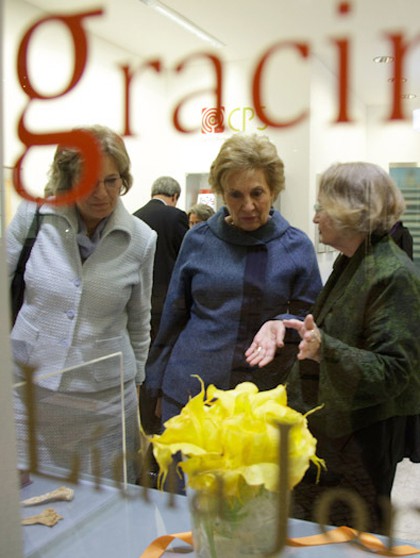
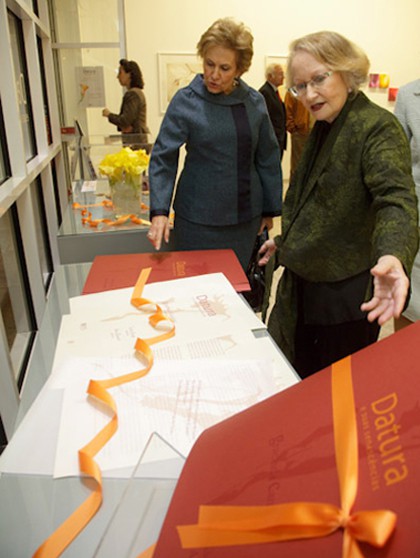
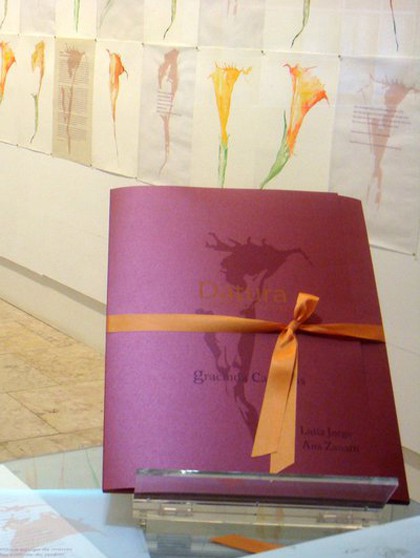
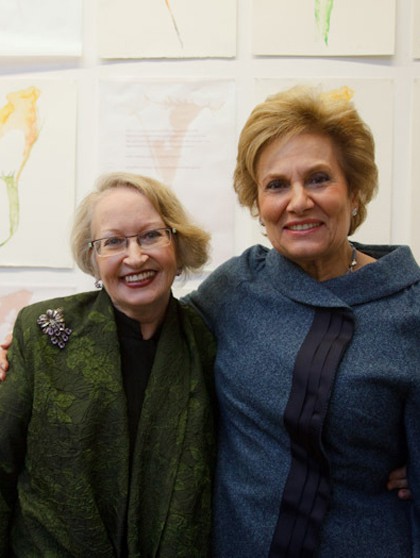
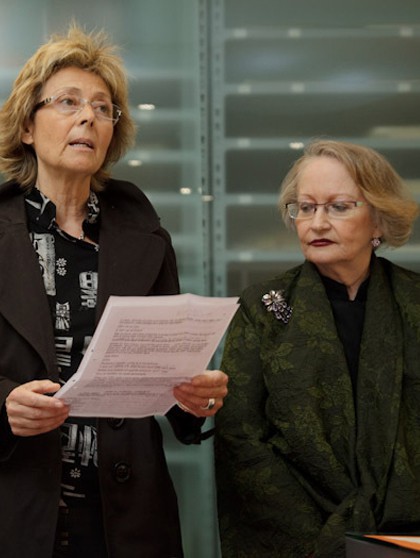
Datura and its Senescences
An album of silkscreens by Gracinda Candeias with the title: “Datura and its Senescences” and with an introduction by Lídia Jorge and poems by Ana Zanatti it will be presented by the authors and Maria João Fernandes on November 10th (Tuesday) at 6:30 pm at the CPS store at the Centro Cultural de Belém. The metamorphosis that time imparts to forms, a timeless theme of art, is The guiding motif of the artist's gaze focuses on flowers that chance led her to discover on her daily journey to charge them with the magic of their lines, their stains and their colors and a symbolism that she herself defines in opening text: “Botanists say that these color changes have to do with genes, and that they also depend on internal and external factors, such as temperature, pollination, light, the environment. The truth is that I had been walking those streets for close to thirty years and had never seen the doorbells. Would I be there in time to see them, in the magnificent passage of their time of flowers? About the daturas, I knew that they were trumpet-shaped, that they gave off a pleasant smell to the air. night, which came from Ecuador, which were from the group of “sleepy”, which were the sacred flowers of the goddess Shiva, master of life and death, which cause states of ecstasy and which were also a poison mortal. But I didn't know that they lived close to me, nor did I calculate how they could fill my life with meaning, without realizing it. as I accompanied them in their life changes.” From the solar splendor of his birth and youth, to the its autumnal flowering and With the announced decay of its spring vigor, the flower is is the support of magnificent plastic metaphors that synthesize the cycles of life and love to which it gives. expression is Ana Zanatti's poetry, short poems full of sensoriality, in an oriental style, that accompany each of the images: “Perhaps others will understand/ that from the wings of passion/ white feathers/ seeds that take root are released. are flowers/pointed to the sky/where you and I finally found peace.” In turn, writer Lídia Jorge describes the aesthetic journey that led Gracinda Candeias to her career. It is a kind of transfiguration of the natural world that its flowers represent: “the transfiguration comes from the route of transit that takes place in time and space, from the interval that takes place between the primitive world and the so-called civilized. From the distance between Europe and the East, Europe and Africa. From North Africa and the desert, or from Angola where he was born and maintains his roots. (…) Your stimuli are from afar, the flowers, the birds, the clouds, the trees, the rivers, the colors and the feelings of wonder, nostalgia, memory, memory of odors and glimpses. The transport of sensuality around the world, earth and heaven. And the materials are also from afar, the papers, the pigments, the glues, the sticks, the seals, the stamps. And from afar the forms it expresses seem to be torn away – the birds are stylized in the shape of an egg, the clouds expand with the transparency of the skies, the pebbles are scattered in the desert that disappears in clouds. As if the form had surrendered to the impulse of color, and color was the most refined survival of the lived experience.” Between word and image, in a true ritual that has at its center the unveiled beauty of nature's forms, Gracinda Candeias once again dazzles us with an art that is unique. first and foremost a poetic expression of the human where we recognize the anguish and fascination of everyday experiences and the mystery that presides over our destiny.